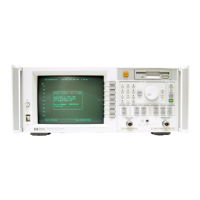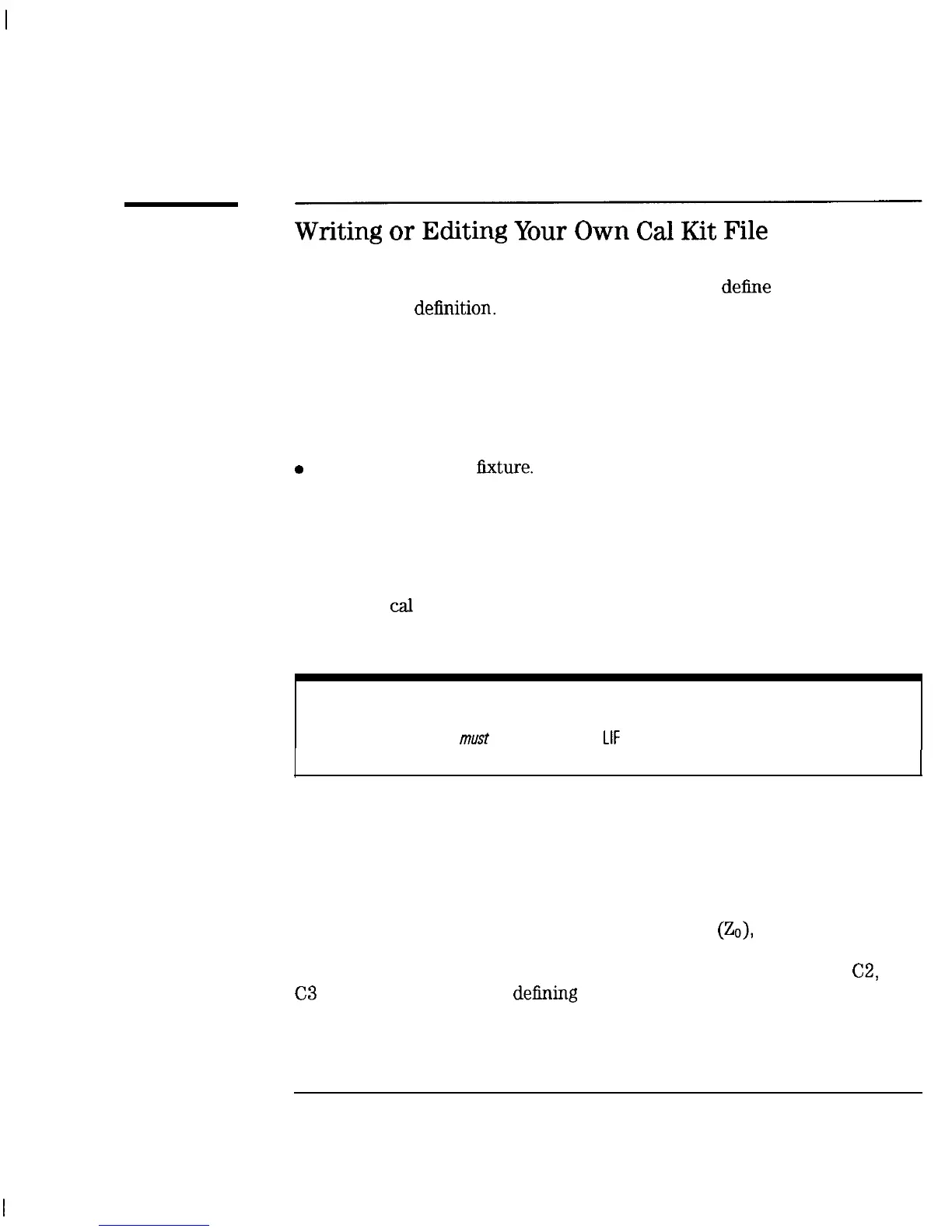I
-
Calibrating for Increased Measurement
Accuracy
Choose an Appropriate Calibration Method
Writing
or
Editing
Your
Own
Cal
Kit
File
There are several situations that may require you to
deline
your own
calibration kit
delinition.
Here are three examples:
l
You are using a connector type (TNC or BNC for example) which is not one
of the selections under the CAL KIT menu.
l
You are using a built-in connector type, but your standards (such as a short)
have different characteristics than the built-in kit uses when performing a
calibration.
0
You are using a test
fixture.
The following steps (explained later in detail) should be performed when
defining your own cal kit:
1. Determine the standard characteristics for the connector type you plan to
use.
2. Create a
cal
kit ASCII file or edit the one provided on the Example
Programs Disk.
NOTE
Calibration kit definitions
must
be in DOS format.
LIF
format is not supported for cal kit definitions.
3. Verify performance.
Step 1: Determine the
Determine the standard characteristics for the connector type you plan to use.
Standard
In particular, these are the characteristic impedance
(Z,),
the delay, and the
Characteristics
loss. These characteristics are common for the four supported types used by
the analyzer. Additionally, the capacitive model parameters, CO, Cl,
C2,
and
C3
are necessary for fully
defining
the open. These electrical characteristics
can be mathematically derived from the physical dimensions and material of
each calibration standard or from its actual measured response.
6-19
-
深圳市盛腾仪器仪表有限公司 Tel:0755-83589391 Fax:0755-83539691 Website: www.Sengt.com

